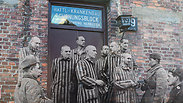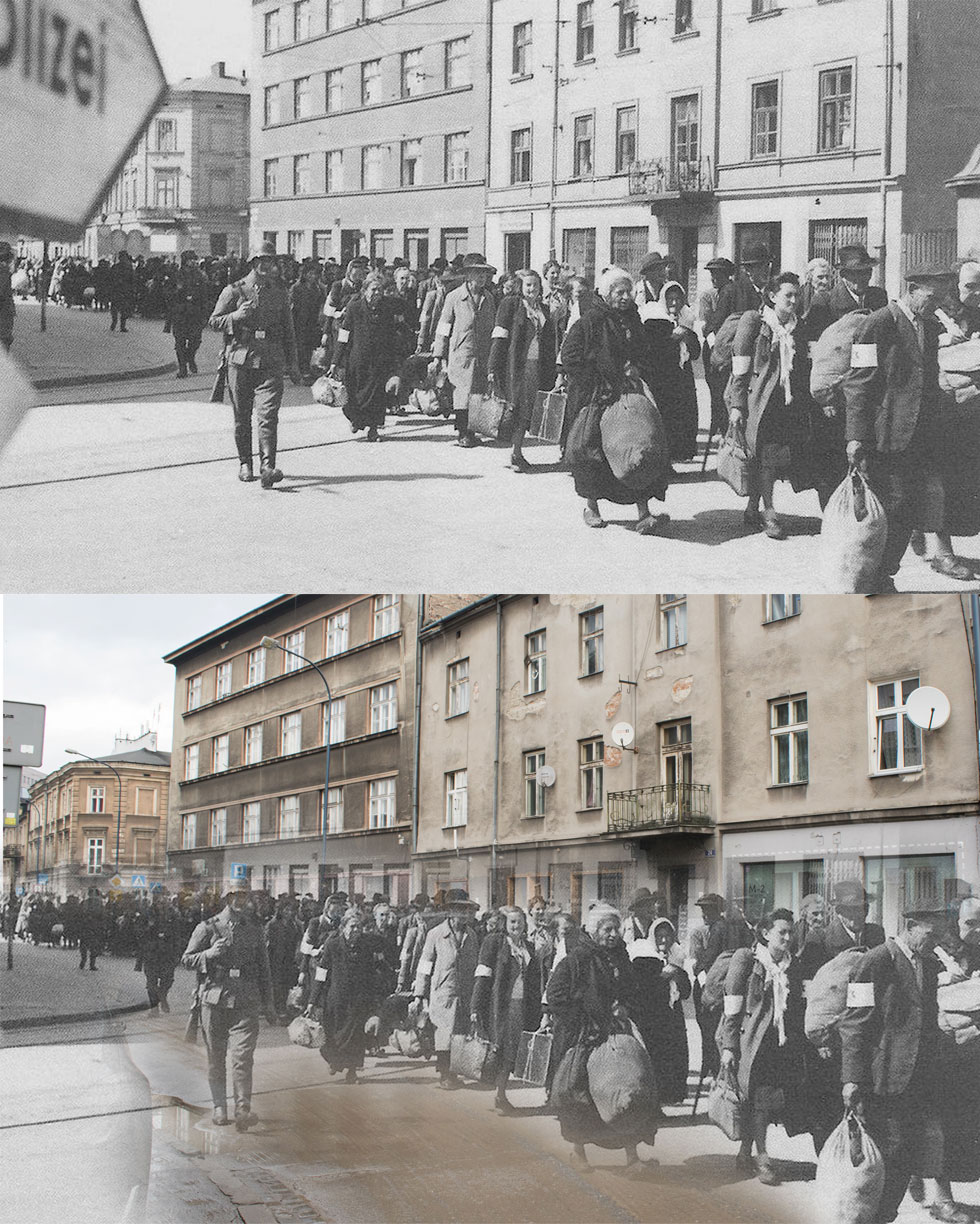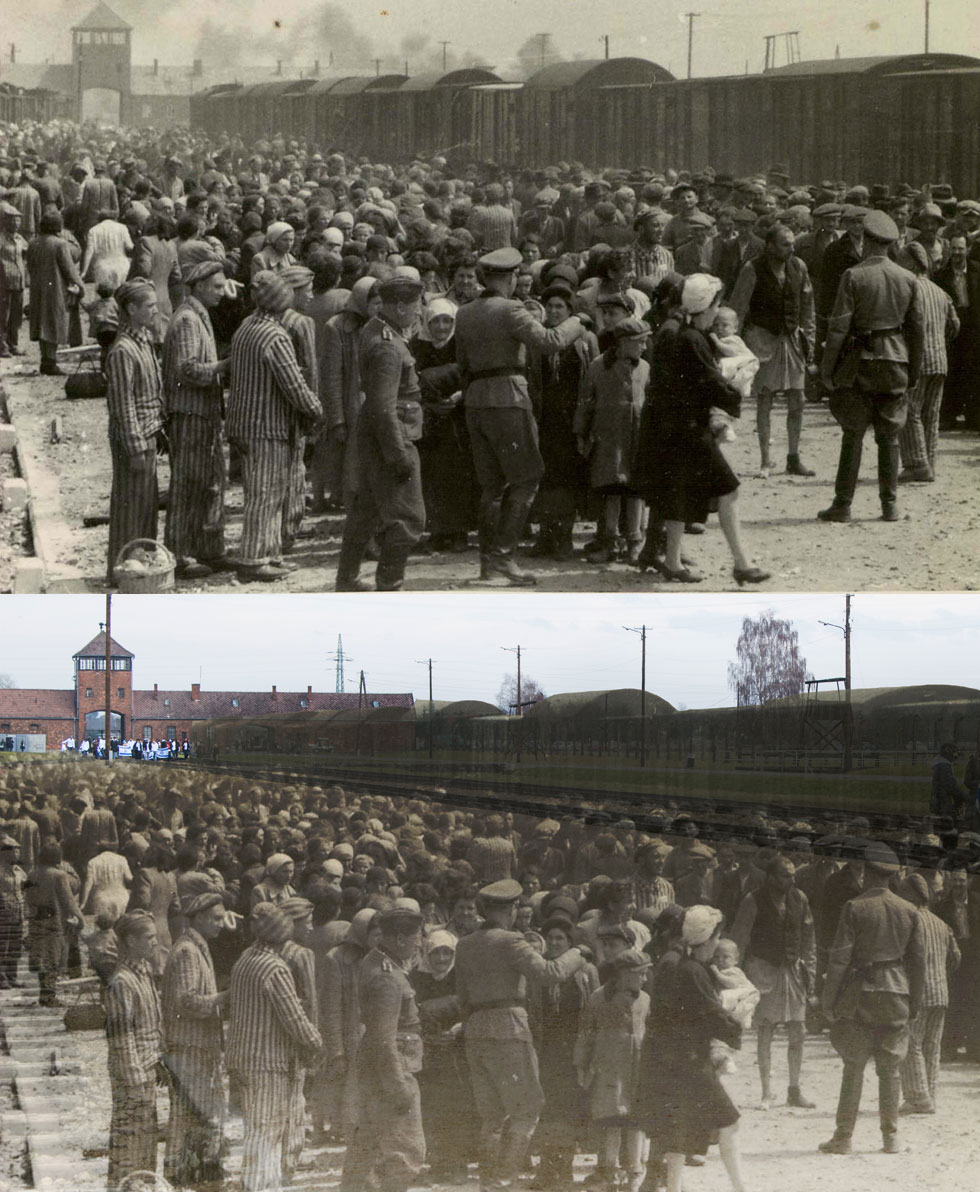
"Every photographer always looks for their own way to present a subject and to express himself. I always wanted to present Poland in an original way, but in Poland, it's difficult to be original," said Azar. "So I went about a project that wasn't easy and involved travelling back and forth to Jerusalem and communicating with people in museums and in Poland and the help of a lot of people."
In his project, Azar chose 20 photos that were taken in Poland during the Holocaust—and recreated them. He stood exactly where the original photographs were taken, snapped a photo to show how each location looks today and then superimposed the people from the original Holocaust-era photograph over the present-day location.
The result gives the viewer an interesting experience—a combination of the new and old, the trauma of the Holocaust in black and white mixed with the daily life of modern Poland.
"People say it makes them shudder and that was my goal," said Azar in an interview with Ynet. "I wanted to emphasize that just because we're seeing something in color, it doesn't mean its past is far removed from us today."
The project, which according to Azar is part of the process of "dealing" with the Holocaust, required coordination with officials in Poland. "For one of the pictures, I had to get permission from the Museum of Auschwitz to reach the place where the picture was taken."



















